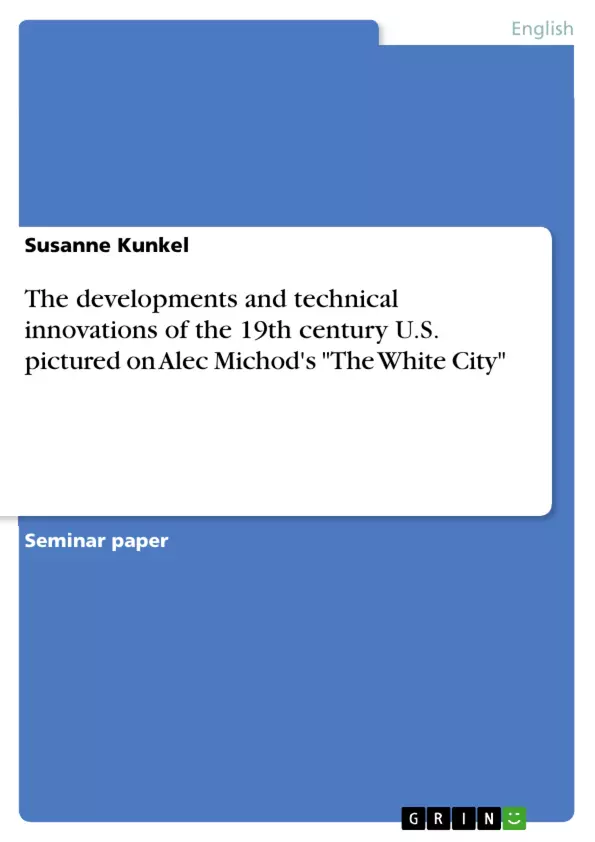This paper will deal with how American culture changed and grew near the end of the 19th century. The Industrial Revolution, the American Civil War – which ended up with the abolition of Slavery – Reconstruction Era and much more historical and political occurrences, stamped the United States as a nation – the nation as we know it nowadays. In this paper, however, only the most serious development – the Industrial Revolution and its heir – will be handled, as otherwise dwelling on details of all 19th century occurrences would go beyond the boundaries.
To introduce the topic and issue, background information on the 19th century U.S. will be provided. The Industrial Revolution represents a term that can’t easily be assigned to a specific point of time, but rather a period of time that started approximately around the 1850s and ended presumably at the beginning of the new century. It’s hard to define a date as the Industrial Revolution, also called “The Machine Age”, had been a kind of process that had its beginnings in Great Britain and only came to America later on. What can be told for sure is that this Revolution with all its technical innovations and improvements in all fields of life represents the “break-through” of America as a superpower. These and more aspects will be explained at the beginning of the main part.
[...]
Inhaltsverzeichnis (Table of Contents)
- I. Introduction
- II. The White City
- 1. Background information on the 19th century U.S.
- 1.1 The Industrial Revolution “The Gilded Age”
- 1.2 The heir of the Industrial Revolution
- 2. The White City - the real story behind the book
- 2.1 The historical novel
- 2.2 The Chicago World's Fair
- 2.3 H.H. Holmes - America's first serial killer
- 3. The impacts of the developments of the 19th century related to Alec Michod's The White City
- 1. Background information on the 19th century U.S.
- III. Conclusion
Zielsetzung und Themenschwerpunkte (Objectives and Key Themes)
This paper examines the cultural changes and growth that occurred in the United States near the end of the 19th century, specifically focusing on the impact of the Industrial Revolution.- The Industrial Revolution’s impact on American culture and society.
- The rise of urbanization and its effects on American values and lifestyle.
- The historical novel as a genre and its use in Alec Michod's The White City.
- The role of the Chicago World's Fair in shaping American identity.
- The story of H.H. Holmes, America's first serial killer, and its fictionalization in The White City.
Zusammenfassung der Kapitel (Chapter Summaries)
- Chapter I: Introduction: This chapter provides a brief overview of the Gilded Age and its significance in shaping modern America. It highlights the importance of the Industrial Revolution and its impact on American culture, society, and values.
- Chapter II: The White City: This chapter introduces Alec Michod's The White City and its connection to real historical events. It explores the book's use of the historical novel genre, the Chicago World's Fair, and the story of H.H. Holmes, America's first serial killer.
- Chapter III: The Impacts of the Developments of the 19th Century Related to Alec Michod's The White City: This chapter delves deeper into the relationship between the historical context of the late 19th century and the novel. It analyzes how Michod utilizes factual elements and fictional characters to convey the changes and innovations of the era, while also creating a suspenseful narrative of murders.
Schlüsselwörter (Keywords)
This preview examines key topics including the Industrial Revolution, urbanization, American culture, the historical novel, the Chicago World's Fair, and H.H. Holmes.- Quote paper
- Susanne Kunkel (Author), 2008, The developments and technical innovations of the 19th century U.S. pictured on Alec Michod's "The White City" , Munich, GRIN Verlag, https://www.grin.com/document/112701



